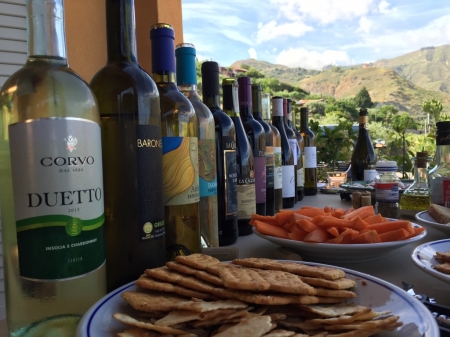Wine and Cheese Tasting
Cheese and wine tastings have always been a gourmet pastime, and more and more Sonoma wineries are adding cheese and wine to their menu to show guests which cheese complements their wine best. Here is a constantly updated guide to wine and cheese in Sonomas, updated in May 2018 and organized by wine region. Not all fruits are paired with fruits, although the two pals are close friends. The wineries vary in tasting times, and the price quoted is per person or cheese platter, but it is usually roughly the price of a bottle of wine. The Elevation Tasting takes only 60 minutes and includes only the pairings of wine and cheese, but it is a unique experience. The exploration tour and tastings include a guided tour of the winery followed by a cheese and wine combination to complement the unique flavor and structural profile of each wine. Wine and cheese are constantly changing, so each visit will be a different experience with different wines, different cheeses, and different styles of wine. If you are planning to organize a wine and cheese tasting with friends, you may be wondering how to choose a cheese that goes with your wine. The cheese you choose may be limited, but ultimately it should complement the wine you serve. Here at Vinoglo.com, we prefer the milder cheeses. Generally, mild cheese should be combined with milder wines and strong cheese with stronger wines. For example, a strong Gruyere should be paired with a full-bodied Chianti, but a milder with a mature wine such as Cabernet Sauvignon. Many kinds of cheese often clash and can overwhelm the palate, so be very careful when combining Cabernet Sauvignon with cheese. In general, try to combine it with a strong cheese such as a Gruyere or a smoked Gouda, but do not overly clash with it, which makes the tasting an unpleasant experience.
Flavors of Cheese
Many kinds of cheese often clash, and if you combine a caberrejon or other high-quality wine with the same cheese as the cheese you mate with, you must be very careful. Cabernet Sauvignon can be combined with cold cuts to give the wine its richness and acidity, but to enhance the flavors of wine and cheese, you might want to add a small salami. Most people combine red wine with cheese and some cheese probably tastes better with white or dessert wine. Don't be afraid of experiments, and as I said above, cabernets and sauces can also be combined well with charcuterie. If you found this post useful and are happy to receive my advice for free, please consider donating to this site before I run out of money, or even better if you like what I do and think it tastes better than white and dessert wines. Find out how to do this here, as well as my regular newsletter and more information on wine and cheese tastings and how to get started. This variety is soft and creamy and goes well with wines such as Pinot Grigio and Champagne, but to find out for yourself, stick to one of A Vin. Tomme d'Alsace is hard, tough, and tastes good, best combined with a wine such as Cabernet Sauvignon, Chardonnay, or Chateauneuf - du - Pape. These are just a few I have tried to combine, although there are many other varieties to choose from depending on your preference. It should also be noted that rosé and sparkling wines such as Cabernet Sauvignon, Chardonnay, and Pinot Noir are as good as the best for these things. They go well with snacks and apps, but build up with champagne. The words are a bit too much for my taste buds and not enough appetizer for me. This wine tasting is not blind and is suitable for more relaxed, informal tastings, where the only aim is to taste and enjoy the wine, especially when combined with seating at the dinner buffet.
Wine Knowledge Not Necessary

Although I may not be a frequent wine connoisseur, I am a slightly sweet wine and this is one of my favorite wines for that. The advantage of a non-blind tasting is that knowledge of the different grape varieties and their different behaviors can often contribute to the enjoyment of the wine. With a blind tasting, you could explore and compare all these different grapes and varieties to see which one is, as well as compare and contrast. I am told that Brunello di Montalcino from Tuscany has a very different flavor profile from other wines from the same region. I also tasted a few different wines from other regions of the world, such as France, Germany, Italy, and Spain. Why it works: The lightness of Moscato and other sweet white wines is a great change from the spicy cheese that always goes well with heavy, enriched wines. You can also opt for milder, traditional triple cream cheeses to avoid the smell, but heavy cheeses such as Gorgonzola cleanse the mouth and provide a pleasant refreshment. Nevertheless, a slightly wacky cheese demands a sweet wine, so why not a white wine like Chardonnay or a wine from a region like Montalcino?The pongent, washed with beef bark, loses some of its punch in combination with chardonnay, and you can clean the mouth of a heavy cheese, like a Goring, with the same amount of salt and acid, while leaving it nice and refreshing.
